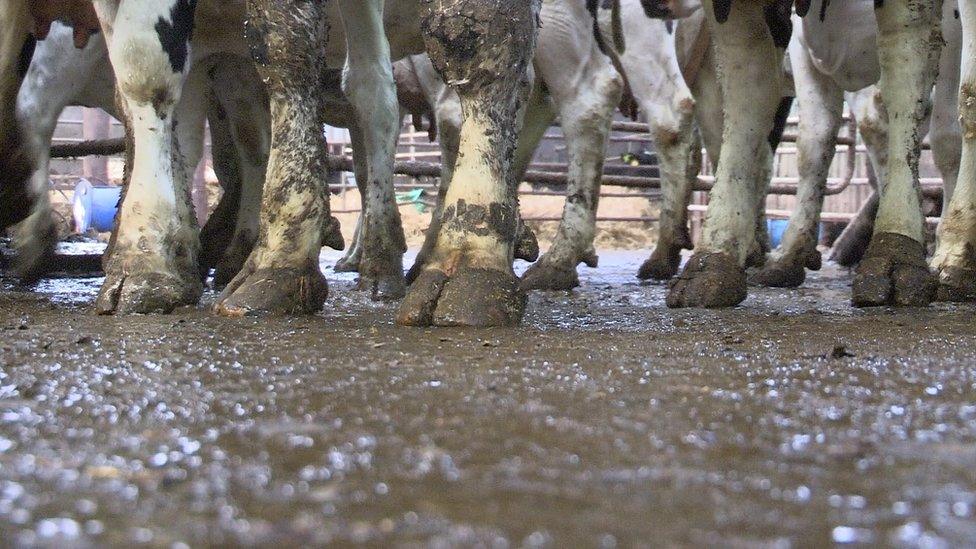Ammonia: Move by Edwin Poots eases farm planning backlog
- Published

Northern Ireland has a significant problem with ammonia, the bulk of which comes from agriculture
A backlog of farm planning applications in Northern Ireland, caused by questions about their environmental impact, has begun to be addressed.
One hundred and sixty six applications were stuck in the system as officials tried to agree how to assess them for ammonia emissions.
That figure is now down to 83 with a commitment that the backlog will be eliminated by the end of August.
It follows Agriculture and Environment Minister Edwin Poots' intervention.
The ammonia issue is a particular one for farmers living within 7.5km (4.6 miles) of protected sites, the bulk of which are already in breach of acceptable levels.
Such applications have to be screened for any potential ammonia impact and to prevent breaches.
Ammonia comes from livestock manure and is deposited as nitrogen which can seriously impact the biodiversity of sensitive sites such as wetlands.
A body which provides environmental advice to council planners had sought clarity from the Environment Agency about appropriate ammonia levels at which applications could be passed.
Agriculture and Environment Minister Edwin Poots has intervened to address the backlog
Shared Environmental Services (SES) said it was working with Environment Agency guidance until case law suggested it was allowing breaches, in contravention of EU rules protecting important habitats.
SES is run on behalf of all Northern Ireland councils by Mid and East Antrim Borough Council.
Its chief executive Anne Donaghy told councillors at a meeting this week that in the absence of asked-for clarity from the Northern Ireland Environment Agency (NIEA), SES had cut the level to one tenth of what it had been.
She accepted that the decision had had a "big impact on the farming community".
The move sparked a legal challenge from the Ulster Farmers' Union, which was only avoided when SES withdrew the new rule.
Ms Donaghy said Mr Poots had now written to say the original level should be the one used in the assessment of applications, pending a review in the autumn.
Northern Ireland has high ammonia concentrations and levels have been increasing in recent years.
The Department of Agriculture, Environment and Rural Affairs is working on plans to cut them, including a move to low-emission slurry spreading technology which it's estimated can reduce emissions by between 30-60%.
- Published17 January 2018
- Published30 July 2018